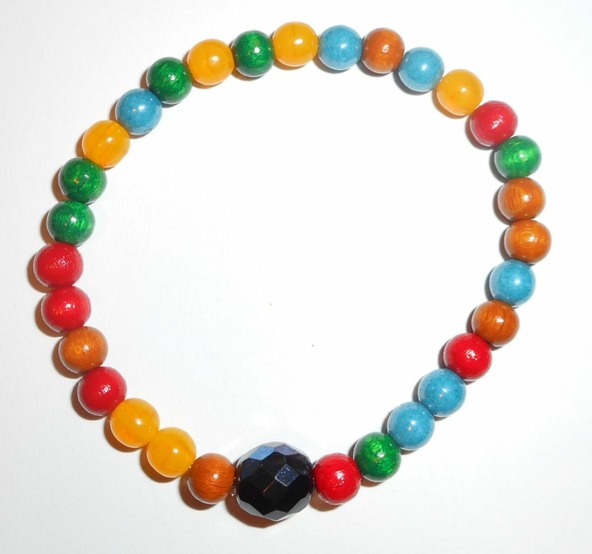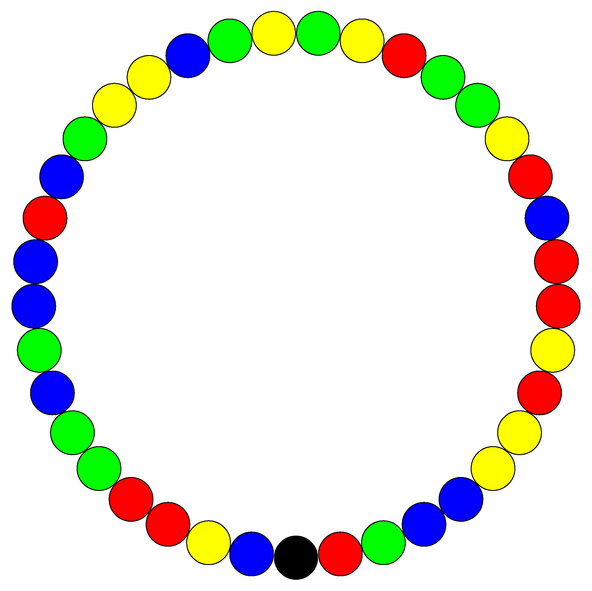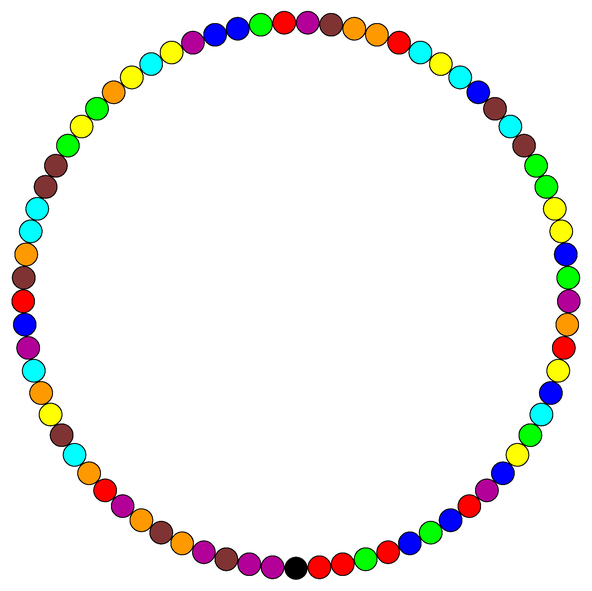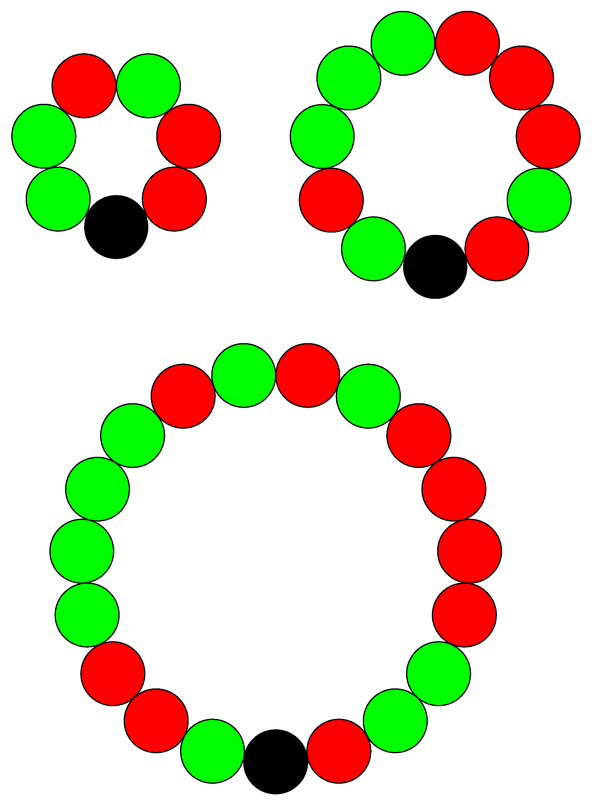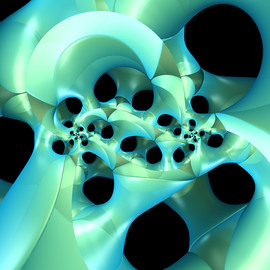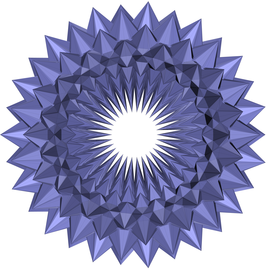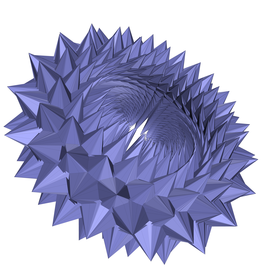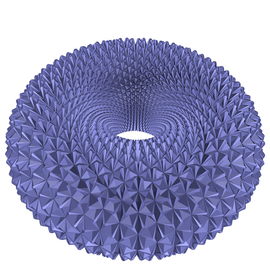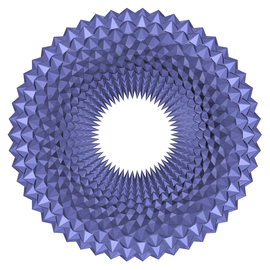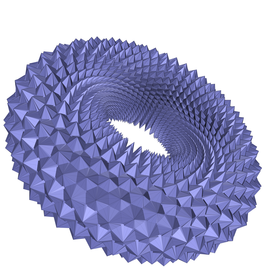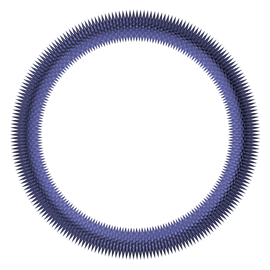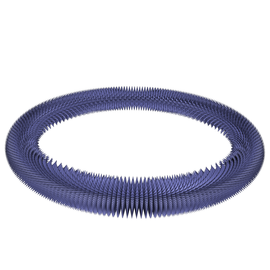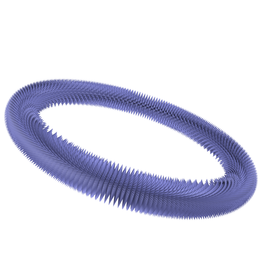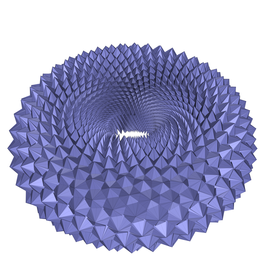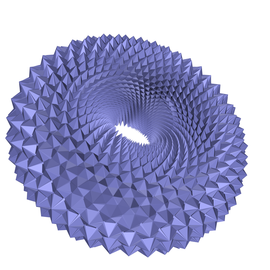Difference bracelets
A difference bracelet consists of v beads. There are k beads of n colours and one black bead (v = k n + 1). The beads are arranged so that there are exactly λ equally coloured beads at each possible distance for every colour. The distance of a pair of beads is the number of moves to get from one to the other, either clockwise or counter-clockwise (every pair of beads has two distances). Such an arrangement is called a (v,k, λ) bracelet. The number of colours can be computed as n = v / (k - 1). The gallery contains pictures of bracelets with parameters (7,3,1), (11,5,2), (19,9,4), (31,6,1), (37,9,2), and (73,9,1).
The beads of any single colour represent a (v,k, λ) difference set in the cyclic group of order v. The black bead is the identity element. Bracelets are in fact tilings of cyclic groups with difference sets. The concept has been defined and studied in the paper A.Ćustić, V.Krčadinac, Y.Zhou, Tiling Groups with Difference Sets, Electronic Journal of Combinatorics 22 (2015) #P2.56.
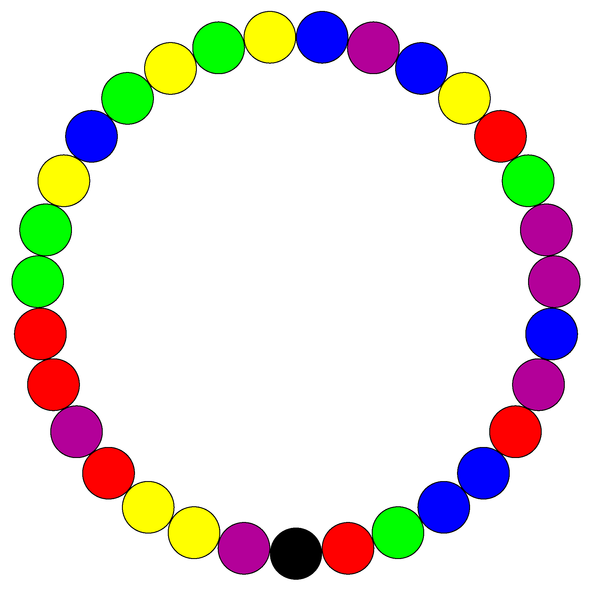
A (31,6,1) bracelet
The bracelet consists of 6 beads in each of 5 colours and a black bead. For every colour and every distance from 1 to 30, there is exactly one pair of beads in the specified colour at the specified distance. The colours define (31,6,1) cyclic difference sets giving rise to projective planes of order 5.

